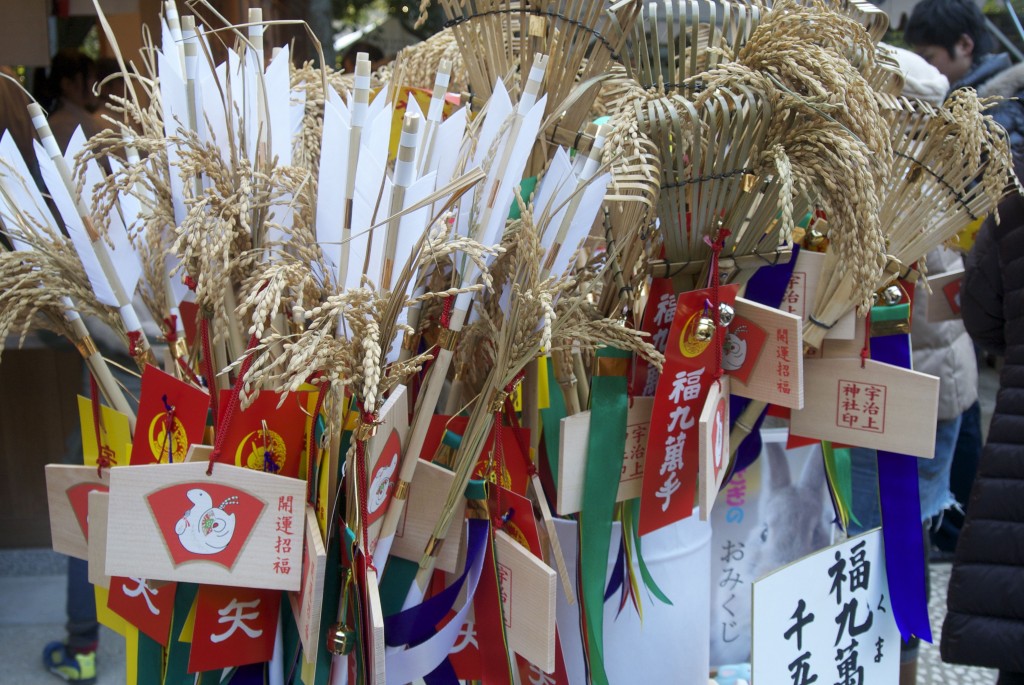
Auspicious items for the New Year from Ujigami Jinja
The town of Uji, south-east of Kyoto, was once a place of aristocratic villas set along the Ujigawa river. A bridge was built across it in 646, making it one of the oldest known bridges in Japan. Battles were fought here in Heike times (twelfth century), and chapters of Genji Monogatari, the world’s oldest novel (c.1005) are set in the town. Now it’s famous for its green tea and boasts two World Heritage Sites – Ujigami Jinja and the temple of Byodo-in.
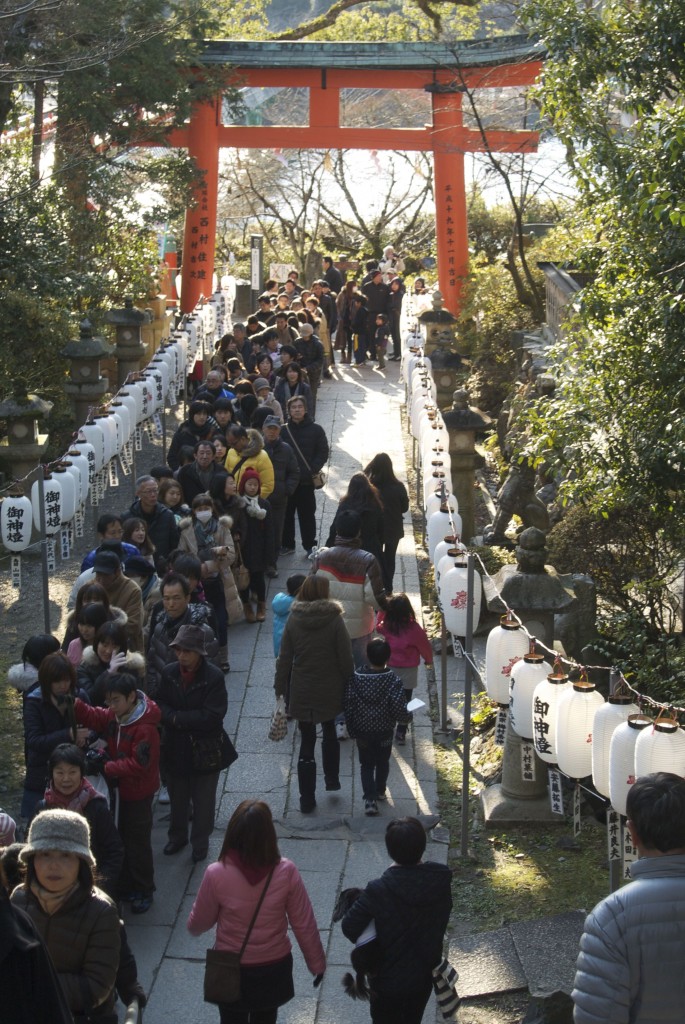
At Uji Jinja, not Ujigami Jinja, there were long queues
Ujigami is one of Kyoto’s 17 Unesco properties, though you’d hardly think so from visiting the shrine. For one thing it’s a modest affair. For another it’s outranked in popularity by the neighbouring Uji Jinja. (Until the Meiji period, the two shrines were in fact considered as one.)
You’d expect a World Heritage Site to have pulling power, but when I visited on Jan. 1 there were huge queues down the steps at Uji Jinja, but not so many people at its illustrious neighbour. How come?
The reason for Ujigami’s World Heritage designation has not to do with its size or prestige, but to do with the age of its buildings. It has the oldest structure of any shrine in Japan, with the honden (sanctuary) thought to date to around 1060. (That compares with the pagoda at Horyu-ji, the oldest standing Buddhist building, which dates to 711.)
The honden actually consists of three different shrines, which stand side-by-side within an encompassing building. There’s a cypress-bark roof and an open latticework on the front wall.
According to Joseph Cali in Shinto Shrines, the middle shrine was built first and stands independently, with its own gabled roof. The two adjoining shrines were however part of the original design and make a unified whole.
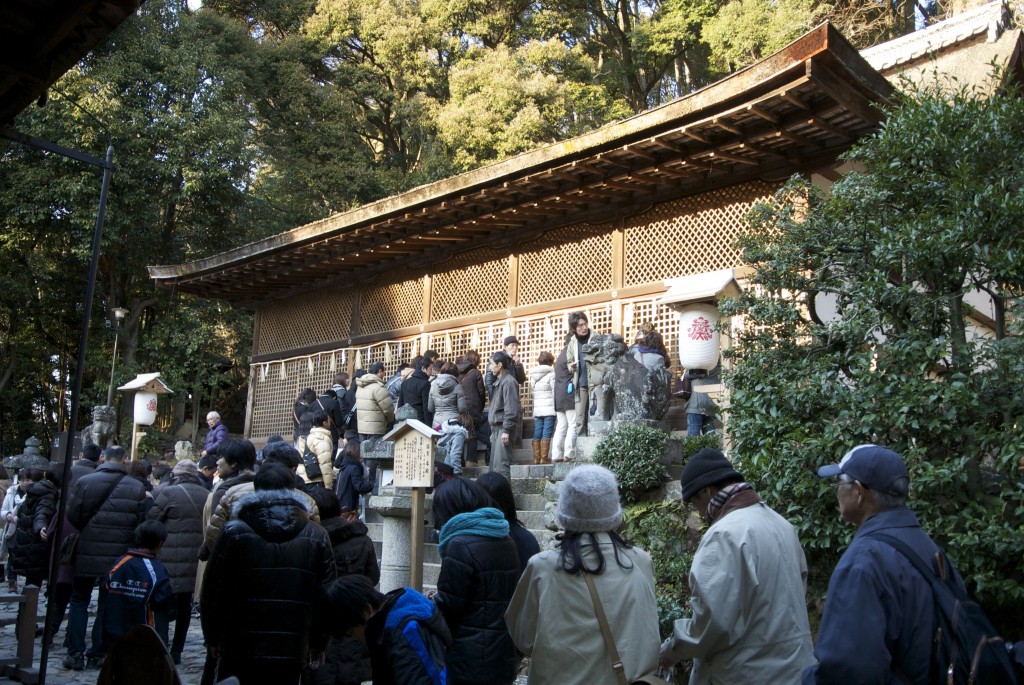
The queue at Ujigami's honden, much shorter than that at Uji Jinja
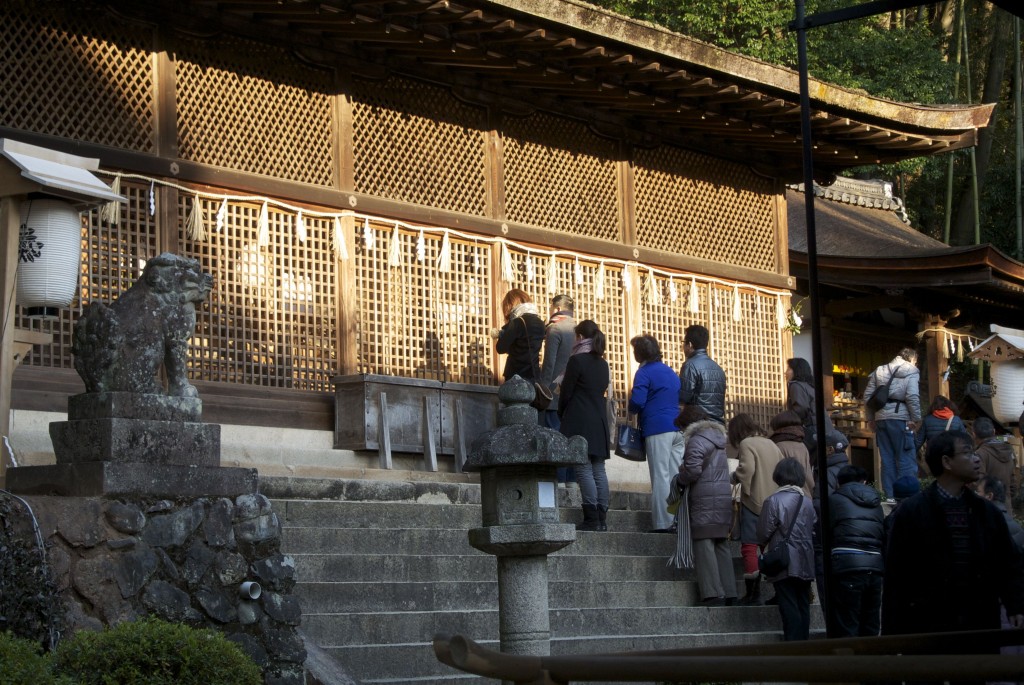
View of the lattice work on the oldest shrine building in Japan
Ujigami enshrines legendary Emperor Ojin and two of his four sons (neighbouring Uji Jinja is said to be built on the villa of Ojin’s son, Uji no Wakiiratsuko). In 1067, the shrine was made the guardian shrine of Byodo-in, currently under reconstruction, which stands on the other side of the river. Byodo-in represents the Pure Land of Amida, and the graceful features of its elegant wooden buildings feature on the back of the Japanese Y10 coin. The Shinto-Buddhist association of shrine and temple continued until the Meiji Restoration of 1868, following which the two religions were formally separated and Ujigami turned into an independent shrine of its own.
Ujiagami’s haiden (worship hall), which stands in front of the honden, dates from around 1215 and is built in the classic aristocratic palace style known as shinden-zukuri. Lattice windows at the side swing upwards to open, and ‘wings’ are located to right and left. Next to the haiden is an unusual well used as a temizuya (wash-basin for purifying hands and mouth).
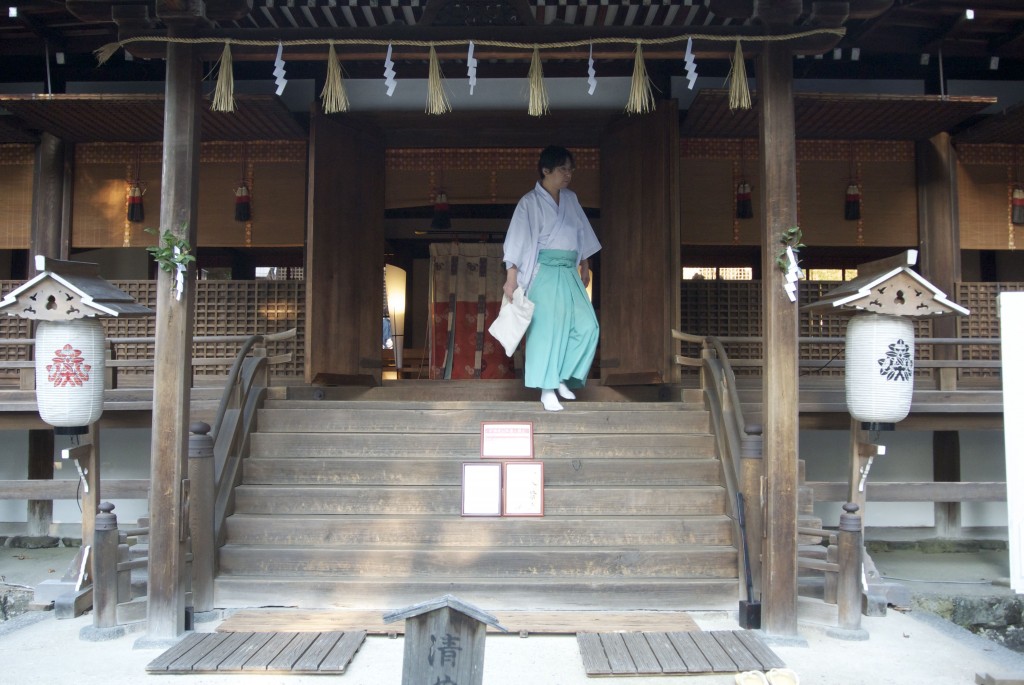
Entrance to the haiden (worship hall)
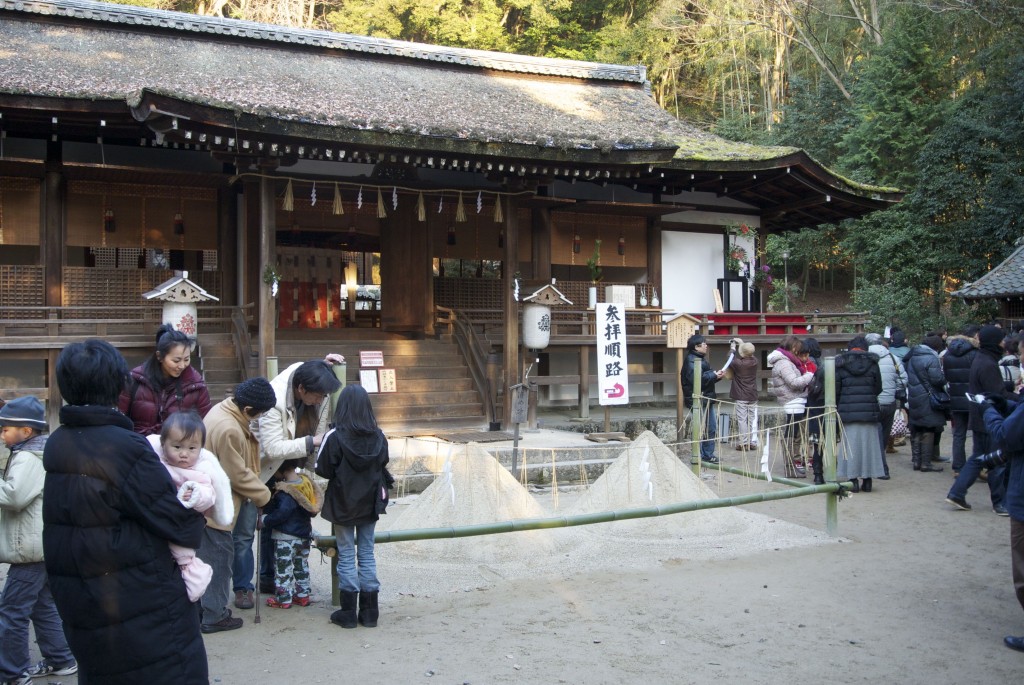
Haiden building in the shinden-zukuri style with two sand cones in front (as at Kamigamo Jinja)
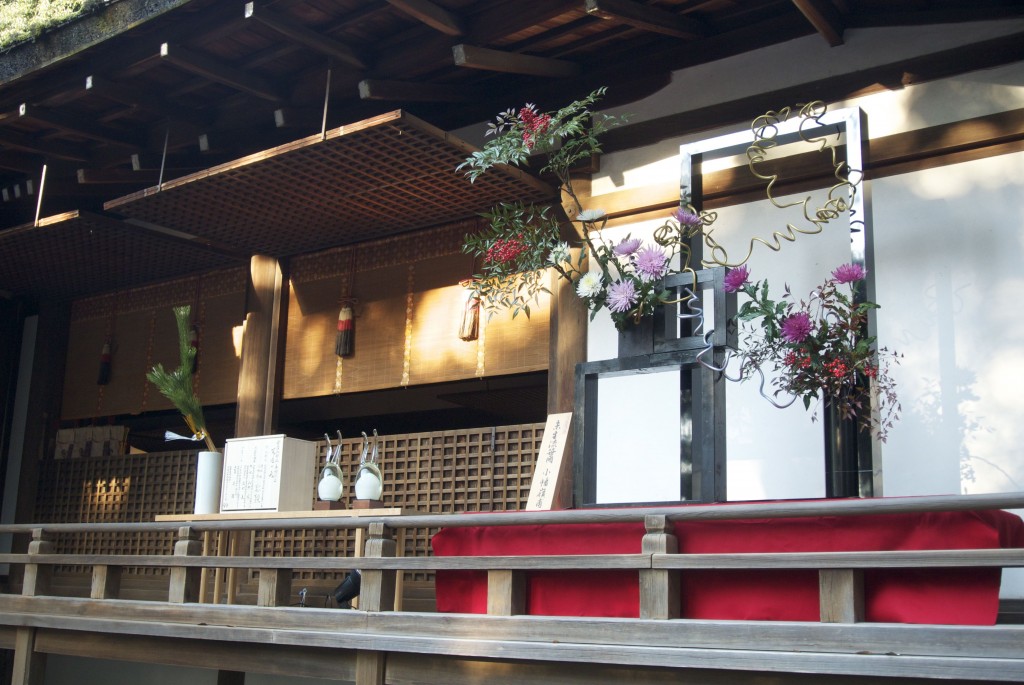
Ikebana on the haiden as a New Year decoration. Notice the upward opening lattice shutter, a typical feature of the shinden-zukuri style of architecture.
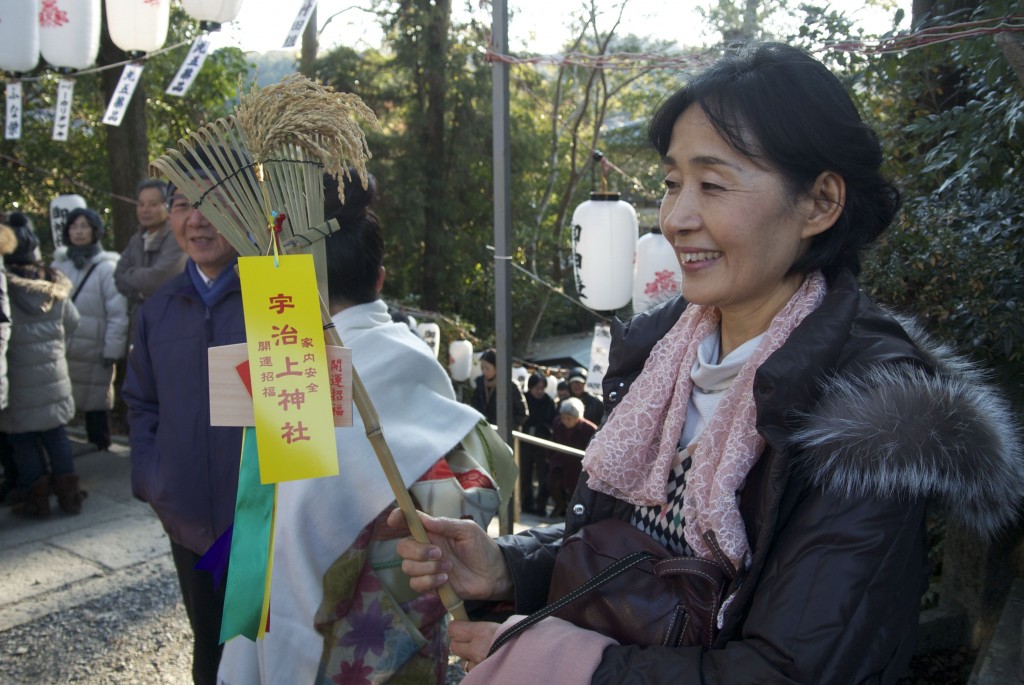
Happy hatsumode visitor able to rake in good luck and prosperity in the coming year
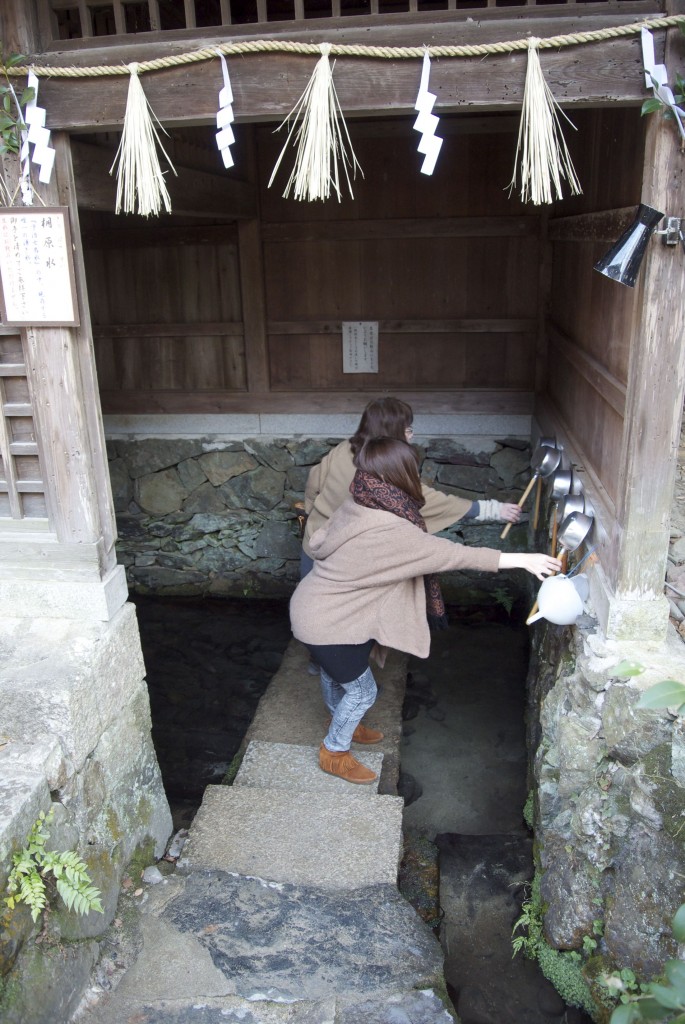
The unusual purification style at Ujigami, one of the seven springs for which Uji was once famous

Leave a Reply